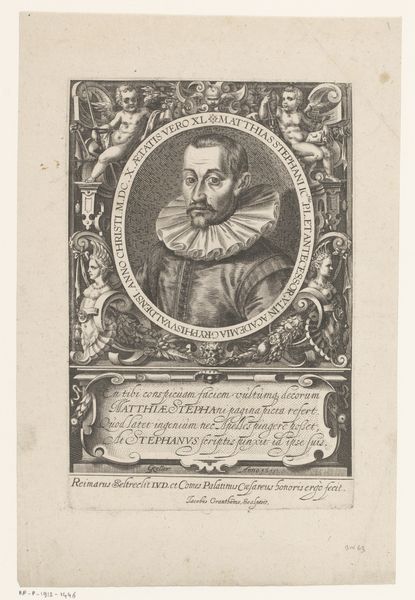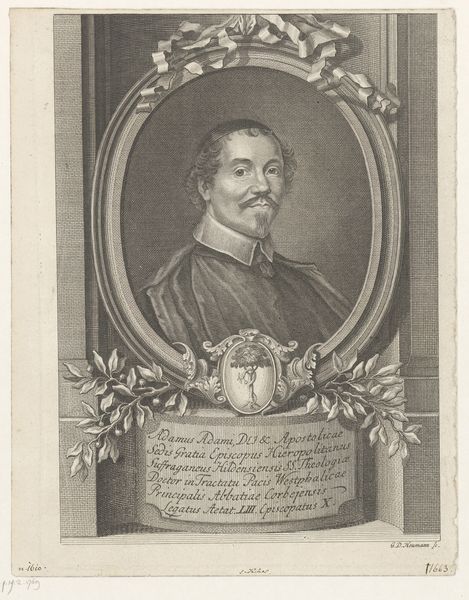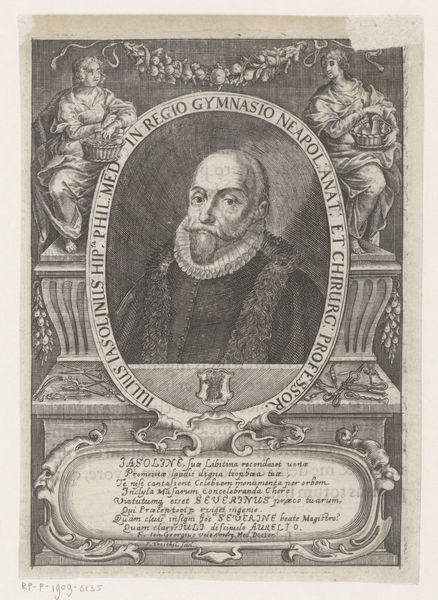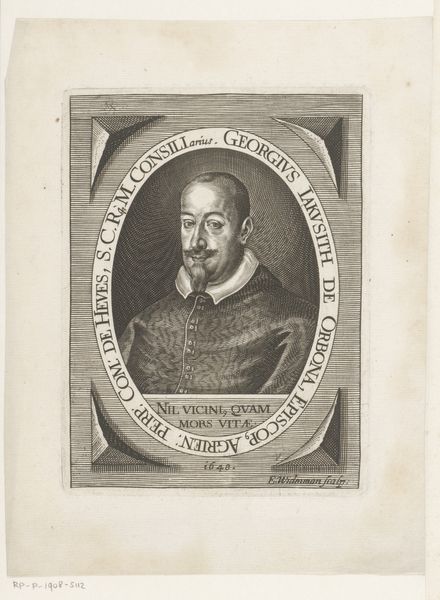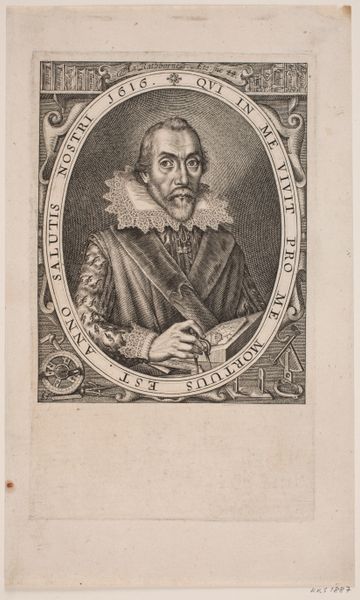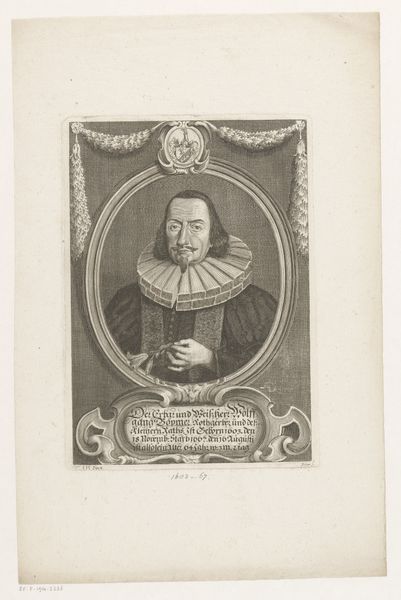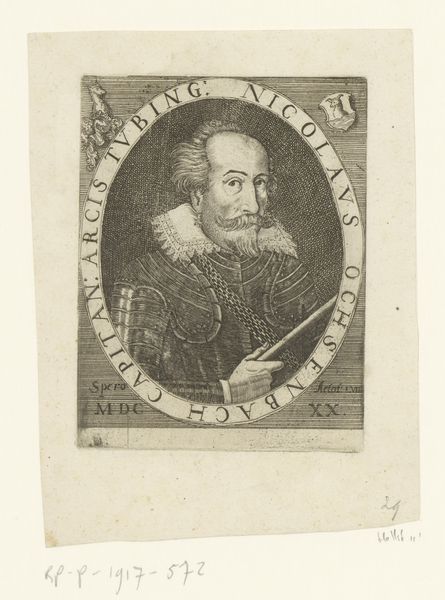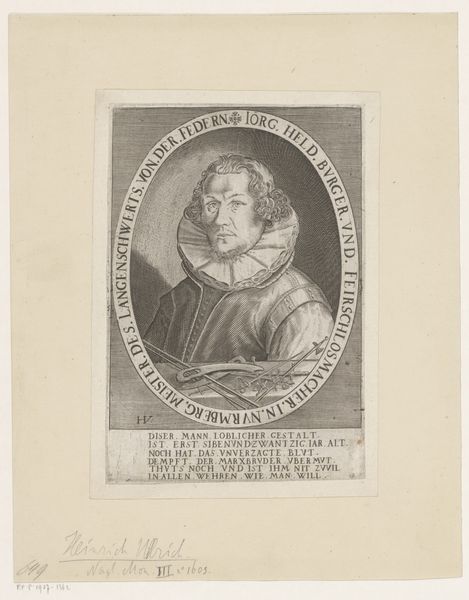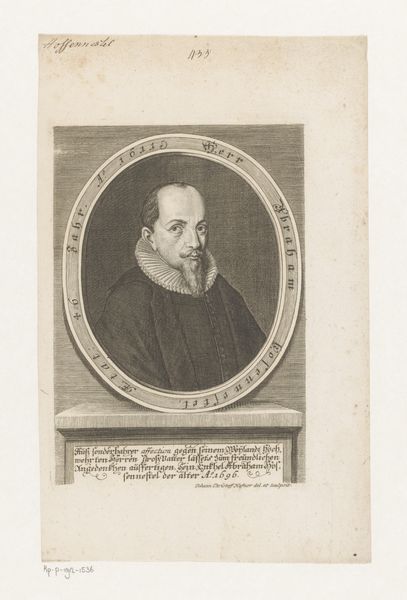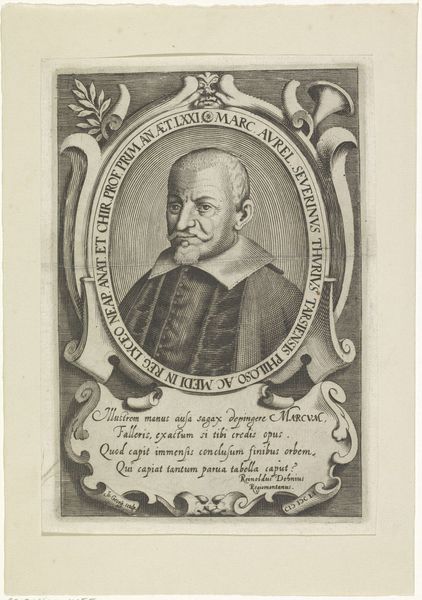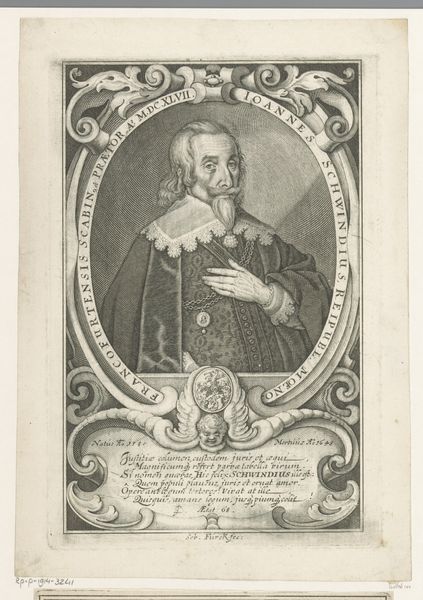
print, engraving
#
portrait
#
baroque
# print
#
figuration
#
geometric
#
history-painting
#
engraving
Dimensions: height 204 mm, width 155 mm
Copyright: Rijks Museum: Open Domain
Andreas Frölich created this portrait of Balthasar Meissner sometime around the mid-17th century, using the technique of engraving. This was, of course, a reproductive medium – designed to circulate images widely. Engraving demands considerable skill. The artist uses a tool called a burin to carve lines directly into a metal plate, which is then inked and printed. The crisp precision of the lines gives the portrait a sense of formality, befitting Meissner's status as a doctor of theology. Look closely, and you’ll see how Frölich has used varying densities of lines to create tone and shadow, giving the face a three-dimensional quality. Engraving was at the heart of a burgeoning print culture. Images like this played a crucial role in disseminating knowledge and shaping public opinion. Consider the labor involved: the engraver's skill, the printer's press, and the distribution networks all contributed to the portrait's reach, a testament to the power of reproducible images in early modern Europe.
Comments
No comments
Be the first to comment and join the conversation on the ultimate creative platform.
